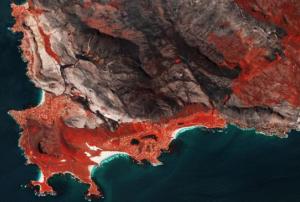Forest Fire
Definition
Facts and figures
Further information
UN-SPIDER Regional Support Offices with hazard-specific expertise
Related content on the Knowledge Portal
- Global and regional syntheses which enable the examination of broad-scale patterns in paleofire activity, creating a framework for exploring the linkages among fire, Human, climate and vegetation at centennial-to-multi-millennial time scales and allowing for evaluation of fire model simulations at regional to global scalesPublishing institution:
- Fires are an important source of atmospheric trace gases and aerosols and they are the most important disturbance agent on a global scale. In addition, deforestation and tropical peatland fires and areas that see an increase in the frequency of fires add to the build-up of atmospheric CO2.
GFED have combined satellite information on fire activity and vegetation productivity to estimate gridded monthly burned area and fire emissions, as well as scalars that can be used to calculate higher temporal resolution emissions. Most of the resulting datasets are downloadable from this website for use in large-scale atmospheric and biogeochemical studies. The core datasets are:
- Burned area
- Burned area from "small" fires based on active fire detections outside the burned area maps
- Carbon and dry matter emissions
- Fractional contributions of various fire types to total emissions
- List of emission factors to compute trace gas and…Publishing institution: Using imagery of the Copernicus Sentinel-2 satellite, researchers from Spain, the United Kingdom and Germany have discovered that more areas in Sub-Saharan Africa are affected by wildfire than previously estimated. In their open-access paper, published in the journal Remote Sensing of Environment, the researchers delineate how they created the first detailed continental map of burnt areas caused by wildfires for 2016.
Specific satellites, such as Sentinel-2, are used to detect disasters like wildfires and map their spreading in order to support relief efforts. Afterwards, the satellites images are used to monitor the traces the fires left behind, especially in remote regions.
Sub-Saharan Africa was picked because…
read more18/02/2019Land cover changes can impact many areas of life. These changes can affect deforestation, ecological communities, wildfire extent, and urban growth. This advanced series focused on using satellite imagery to map changes in land cover. Users will learn change detection methods, including image subtraction and classification. They will also conduct their own change detection analysis. This training will use QGIS, the R statistical program, and the Random Forest algorithm.
This is a free available online course from the program Applied Remote Sensing Training (ARSET) from NASA that includes videos and presentations making this course very interactive.
The learning objectives are:
- Become familiar with Landsat bands and color combinations
- Understand how to visualize change in land cover using Landsat data
- Learn the basic steps for change detection by:
- Conducting image subtraction between two dates using QGIS
- Creating multi-date…
- ESA's Earth Observation Thematic Exploitation Platform (TEP) is a browser for satellite imagery and specific products on an environmental topic. The TEP platforms are divided into 7 categories: Coastal; Forstry; Geohazards; Hydrology; Polar; Urban; and Food Security. Each platform is a collaborative, virtual work environment providing access to EO data and the tools, processors and Information and Communication Technology resources required to work with them. TEP aims to bridge the gap between the users and the data and tools.Publishing institution:
- Publishing institution:
- Publishing institution:
- Publishing institution:





